Recycling, advantages for all
The recycling of a ton of paper saves seventeen trees, in addition to 26,500 liters of water, 4,200 kilowatts per hour (energy needed to heat the single-family house for six months) and a saving of almost 1,500 liters of oil that prevents the emission of 27 kilos of pollutants into the air.

It is nothing new, recycling has many advantages. Most of what we throw away is recyclable, but there is a lot of effort behind it. Scarcity encourages recycling and prosperity is so hostile.
Paper, for example, can be recycled at home, but it won't be as bought at the store. This will occur not only with paper, but also with any other material. However, some environmental groups want to reinforce another idea about recycling: basic recycling is reuse.
Almost all materials are recyclable: paper, glass, metal, plastic... and also household electrical appliances. However, to recycle each material it is necessary to use the corresponding technique. Other factors to consider. Recycling aluminum, for example, is cheaper than creating a new one; the opposite happens with paper.
Paper
In today's society a lot of paper is used. Paper can be a measure of the exaltation of society. Most trash, about 40%, is paper. That means consumption is also huge. Where does the raw material come from to supply all this consumption? For years, the exploitation of forests and the modification of fast-growing trees was no other way.
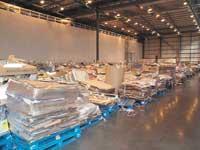
But in recent decades paper has begun to be recycled. In 1994, the goal of recycling 50% of the 2000 paper was established in the United States. This goal has not been met, but is recycled around 45%, which is a success of the campaign. In Europe this proportion is higher and in Japan it is the largest of all (in 1996 they recycled about 60%). But what makes recycling so difficult and expensive?
From the point of view of the process, it must be taken into account that the paper is accompanied by a lot of substances. The most abundant is ink, but not the only one. The first step in recycling is to remove ink by using water. The material generated in this process is called pasta and is the raw material for the reconstruction of the paper. However, many papers contain pressure-sensitive adhesives, substances that do not dissolve in water. When these adhesives are in the paste, they produce "defects" in the paper; the treatment to remove these adhesives greatly increases the recycling process.
On the other hand, paper (cellulose) has many additives that give it whiteness and mechanical properties. The most important are caolinite, calcium carbonate, magnesium silicate (talc) and titanium oxide. Recycling does not remove these substances. Depending on the product to be made, some additives must be separated from cellulose and others not. In general, in addition, separate products pollute the environment (ink components are also contaminants), substances that also need to be treated.
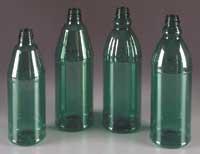
It is no wonder that recycled paper is more expensive than the new one. So how can recycling be encouraged? Strengthening public participation? With investments in the development of unwinding machines? Through new paper taxes?
Glass
Despite being invented some 5,000 years ago, glass manufacturing underwent a major change in the 20th century. At the beginning of the 20th century. In 1905, the first glass packaging machine was invented, with which packaging production increased considerably and people radically changed their attitude towards this material. Until then, glass containers were objects of great value, difficult to make but easy to break. But the industrial advance depletes this situation: unlike previous times, if the glass container is broken the replacement can be easily obtained.
As a material, glass has very special properties: being transparent natural allows to see the contents of the container; in general, it does not produce chemical reactions with the content; it does not degrade; it has a very high melting point, that is, it does not deteriorate at room temperature. In addition, colored glass protects the interior from light.
Glass recycling has to do with the glass manufacturing process. In short, glass sand melts, mixes and solidifies as well as other components. The raw material for recycling is not the sand but the pieces of glass used. In addition, the advantage is that these fragments melt at temperatures below the sand.
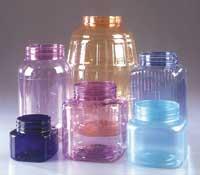

In any case, the pieces to be used in the process should be prepared. As in the case of paper, glass has several additives. In recycling only some of these additives should be removed and others should not.
It is added to sodium carbonate glass, as the melting point of this mixture is lower than that of pure glass. On the other hand, limestone produces a more complicated break of glass. These two components should not be removed from the recycling fraction. Also included in this group are substances that give color to glass if you want to obtain recycled containers of the same color. Therefore, in many places the recycling glass is separated for collection depending on its color.
However, before starting the recycling process it is necessary to remove other materials and chemicals such as metal, ceramic material, label paper (and adhesive). It is also necessary to remove contaminants that can contain bottles, which increases the recycling process.
Finally, most people who write about glass recycling praise a very important feature: the process does not harm the quality of glass, that is, recycled glass is the same as glass produced from sand. Therefore, glass can be recycled as many times as desired.
Plastic
Plastic has changed our way of life. Its properties are very special, so you can replace most of the materials used previously in many applications. However, when it becomes waste, it generates important environmental problems, both in landfills and incinerators. It is therefore urgent to recycle plastic.

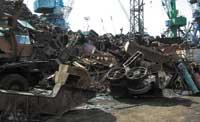
However, plastic is not a material, but a generic name for many materials. Therefore, the first step in recycling the collected is to separate the materials. However, in some cases it is difficult to perform, on the one hand because a single plastic is a mixture of many substances and, on the other, because plastics of the same chemical composition are used to manufacture many different materials.
Plastics use synthetic polymer as the basis. In addition, substances are mixed to give color, plasticity, weight, fire resistance, etc. Also, if you have label, you have other products. These substances must be taken into account to recycle plastic. As with glass, some should be removed and others not. Legally, some substances are prohibited or prohibited. Therefore, if these substances cannot be separated, many plastics cannot be recycled. For example, European legislation aims to eliminate many heavy metals from the market.
However, few polymers are used in most applications, which makes recycling a little easier. The most common polymers in recyclable plastic materials are polyethylene (HDPE and LDPE), polypropylene (PP), polystyrene (PS), polyvinyl chloride (PVC) and polyethylene terephthalate (PET). Teflon used in the production of pans (polytetrafluoroethylene) and many other polymers are not recycled.
However, the need to use different separation methods increases the problem, since each method only identifies a few polymers and additives. Therefore, the complete separation of components requires a very expensive methodology. Therefore, the selective collection of different types of plastics among consumers is an important economic saving. In some municipalities special recycling symbols are used to indicate the type of plastic in packaging. Here, however, the recycling culture is not so widespread and plastic is collected along with metal packaging.
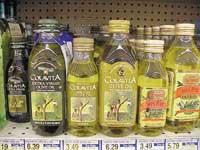
For the recycling of the separated plastic, the fluidized polymer is extruded or injected into a mold, depending on the part to be made, from there a new plastic is formed adding the substances to be added. The resulting plastic and the original have a similar quality, although the new one is less resistant to impact, so it is almost always necessary to add substances that give it this characteristic.
Metals/Batteries
They are very appropriate products for metal recycling. In short, the process is very simple, since with only melt can give a new look and be integrated into a production chain. However, each metal has its own characteristics.
The most commonly used metal to do ordinary things is steel, iron and carbon alloy. It is very useful for the manufacture of metal parts that require hardness. But aluminum, lighter than steel and harder to oxidize, has also become conventional, for example in beverage boats. Recycling aluminum is cheaper and faster than extracting from bauxite (mineral containing aluminum). It is estimated that aluminum boats thrown into recycling can be marketed within 6-8 weeks.
The recycling percentage of both metals is therefore very high. However, metals are not only found in metal tools, but also in batteries. And although the amounts of metals are small, they are very dangerous to health and very environmentally polluting.
Nickel, cadmium and lead are used in rechargeable batteries; in others, lithium, zinc and mercury. This latter metal is considered very dangerous, so more and more municipalities prohibit its use in batteries. However, when recycling batteries it is essential to take into account the presence and quantity of mercury. With any other metal the process is complex as it is done by electrochemical processes.
Oil
The oil has many uses and for each of them it is necessary to use a type of oil, so the components will be different. Oil is not a chemical compound, but a mixture of compounds. Therefore, you must specify the type and destination of the oil for recycling.
Flush oil can contain contaminants of various types: traces of heavy metals, chlorinated solvents, gasoline, polycyclic aromatic hydrocarbons, glycols, PCBs, etc. These substances can also be extracted from oil and partly recycled depending on the chemical process they demand. On the other hand, the oil is filtered and fractionated, the extracted fractions are transferred to the industry.
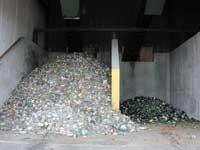
Oil collection and recycling programs for cars have been launched for some time and recently those used in the kitchen have also been designed. Thus, the reuse of oil that has so far been poured into rivers and the sea has sought an adequate way to combat the pollution it generates.
Compost
A lot of household waste is organic matter, that is, it comes from food. Bark, bones and what has not been eaten with food are the organic part of the garbage. And nature can eliminate it or, rather, re-enter the cycle. Composting is a natural process similar to that performed by humans. Therefore, to understand composting, it is necessary to understand the process that occurs in nature.
These residues decompose over time, just as with the litter in the forest. But despite being a normal process, it is the result of the activity of a complex system. The involvement of many microorganisms is slow and depends on temperature, humidity and specific proportions of carbon:nitrogen.
The land that "grows" plants is only the surface of the planet. This surface is in continuous renewal, accumulating organic matter on the soil. As organic matter rots, more soil is generated, aiding the accumulated pressure on it. The air from the ground near the surface is renewed approximately every hour, which also contributes to the formation of a 'healthy' soil.
This Earth balance is not easily achieved. Gardeners say you have to take care of the land, not the plants; if the land is in good condition, the plants will adapt to grow. But balance, in addition to difficult, is something that nature makes very slow. Composting is, however, such a quick imitation. On Earth scale it can be said that organic matter is recycled, but composting cannot be considered recycled, they are two things.


In nature, however, it becomes compost. For example, an Australian bird makes the compost as follows: it accumulates organic matter in the nest and 'treats' it with the help of the beak by drops of water. Man does the same with organic waste, concentrates and tries to relieve the work of decomposing microorganisms.
Organic matter is broken down by different types of microorganisms. Some extract elements from organic molecules to residues: nitrogen, sulfur, phosphorus and metal debris. Others extract minerals such as potassium, magnesium, calcium and iron. Other microorganisms, for example, extract the growth hormones that have remained in organic matter, which helps to grow the roots of the herbs that can be produced there.
On the other hand, some bacteria have the ability to fix the nitrogen contained in the air, sometimes in symbiosis with plants and others without any relationship. This nitrogen is stored as ammonium or nitrate and in addition, depending on needs, plants can transform each of these forms into the other. Thus, it improves the chemical properties of the soil and, in the case of symbiosis, plants use amino acids to synthesize ammonium.
As in many occasions, an instrument of an effective nature is used for the elaboration of compost. But what nature itself would do in a century takes place within a year. This means that many of the soil characteristics must be preserved: proportion of organic matter C:N (carbon:nitrogen), amount of water, ventilation, mainly. It is a good way to treat organic waste, but compost has a smell problem. In short, the same thing happens with other waste: the biggest problem is the amount to be treated.
Do not recycle without collecting
To address the problem of large amounts of waste in cities, industrial recycling is critical. Consumer-based society must provide a solution to all the material left as waste, and recycling plants can be the most environmentally friendly alternatives we know. However, you cannot recycle 100% of the waste due to the problems that are generated.
Recycling requires three things: consumer response, the implementation of appropriate strategies for waste collection and post-collection treatment.
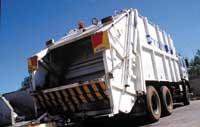
In Euskal Herria, for example, only a basic distinction is required from the consumer. On many occasions it has been proven that we are not willing to make a more precise separation, such as glasses of different colors, plastics or tetrabrick containers, but we are on the way. Recycling campaigns are very successful and gradually the amount of recycled waste increases.
Incineration There is another alternative for the treatment of solid waste: combustion and energy generation. It is a heat treatment by controlled combustion at high temperature for the transformation of inert matter into gas. This process generates solid waste (slag and ash) and gaseous (combustion gases). When burned, electricity is generated by turbines and generators. The main problem of combustion is the products generated in this process, since dioxins and other dangerous products are generated. In addition, it is not possible to control what is generated, since the origin of solid waste cannot be controlled. Thus, unlike recycling, incineration generates a social debate in which ecological damage and the amount of urban waste are, respectively, the main arguments for and against. |





